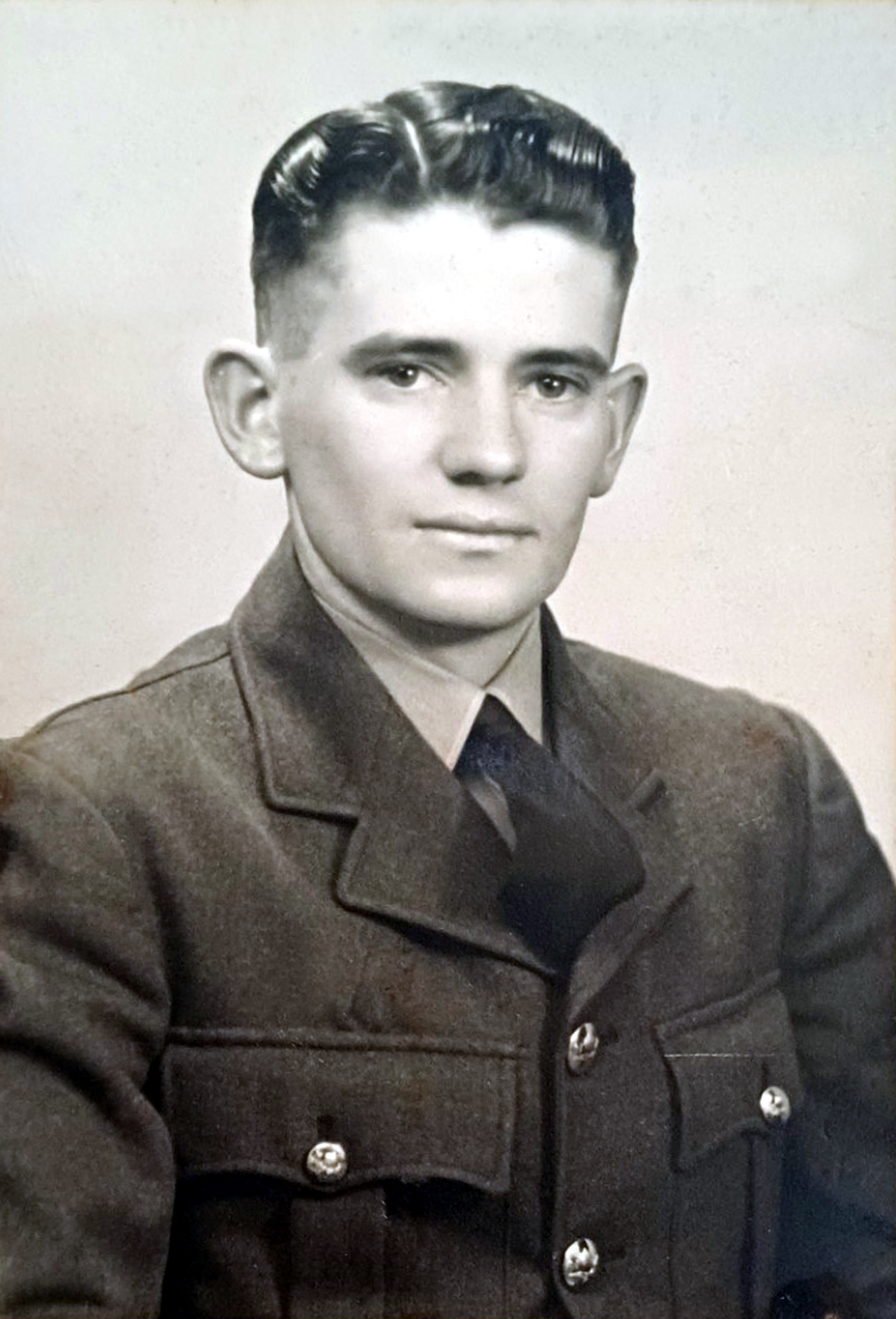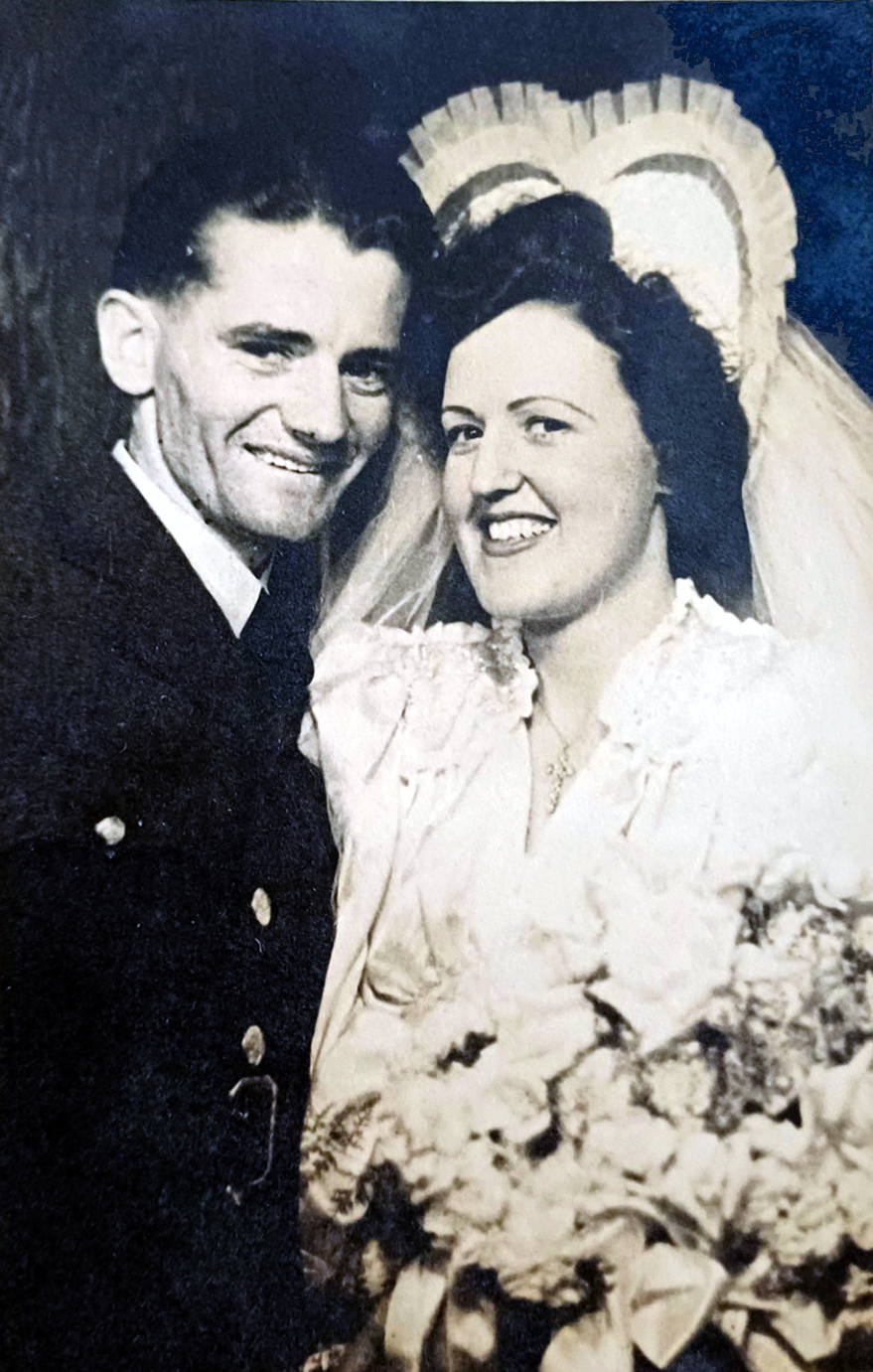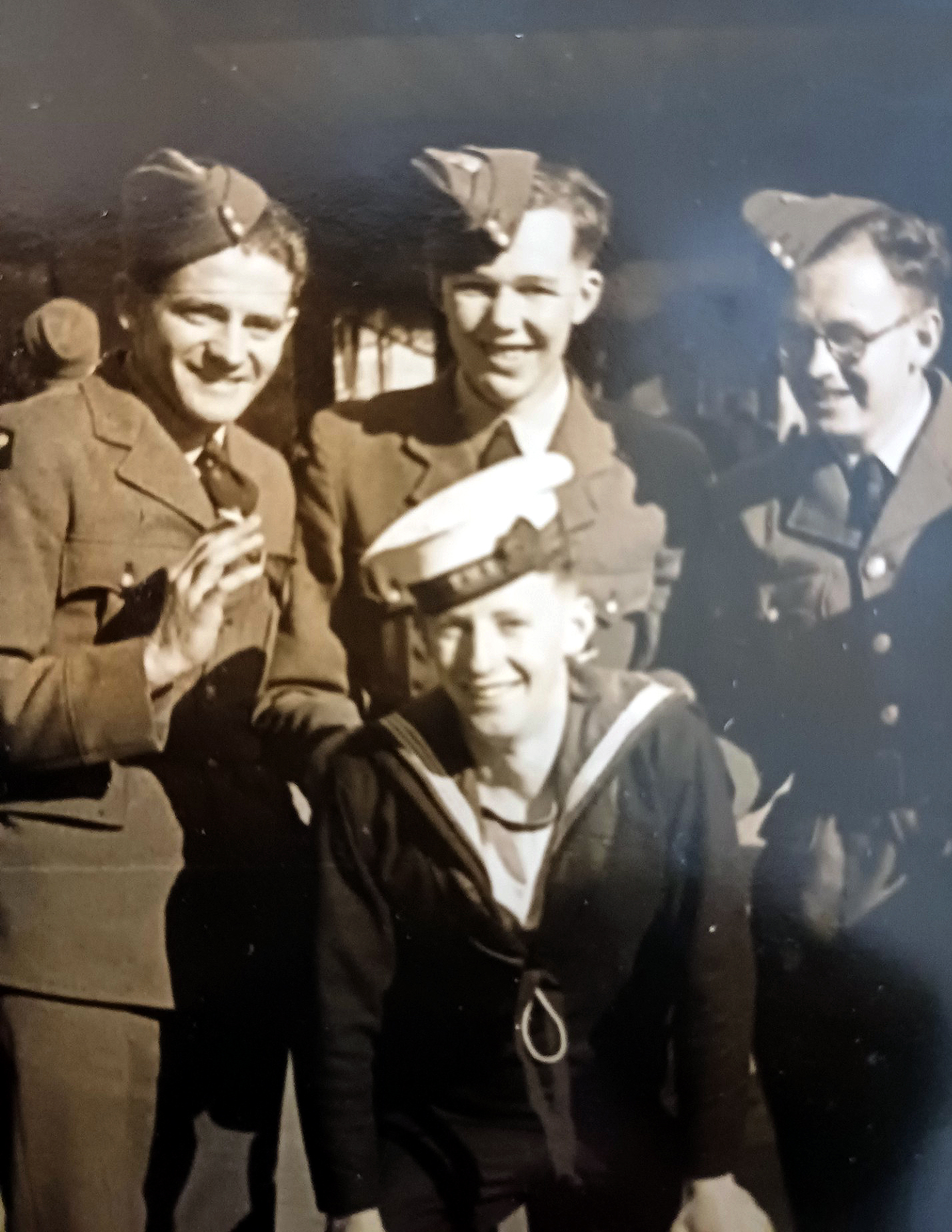__________
_____________
Sefton RICHARDS
Service Number: NZ39578
RNZAF Trade: Fitter IIA, then Flight Engineer
Date of Enlistment: 20th of September 1939
Date of Demob: April 1945
Rank Achieved: unknown
Flying Hours: unknown
Operational Sorties: unknownDate of Birth: Born on the 25th of August 1921, in Auckland
Personal Details: Sefton was the son of Mr. Joseph Vernon Richards and Ruth Richards (nee Blanchard) of Cambridge. Sefton was the second of two sons, his brother being Joseph Forrie Richards, known to all as Forrie.Joe Richards, Sefton's father, was originally from Riverton but he had lived in Cambridge from at least 1905, where his brother, Thomas F. Richards, was a shopkeeper and 1930's Mayor in Cambridge. Joe and Ruth were married on the 5th of January 1914, before Joe left circa 1915 to serve in WWI. After the war they seem to have settled for a few years in Auckland, where their children were born.
Sefton was educated initially for a short time at Mount Albert Primary School before the family returned to Cambridge. By then Sefton was in Primar 3 when he began at Cambridge Primary School and later he continued his education on to Cambridge District High School.
Sefton married Doreen Dickinson in November 1943. His best man was RNZAF Flight Rigger Bill Scullion, with AC1 David Graham and AC1 Bob Wild as his groomsmen. Sefton and Doreen Richards had two children, Craig and Ann (now Ann Osborne).
Service Details: Sefton enlisted in the Air Force on the 20th of September 1939 at RNZAF Station Ohakea as an Aircraft Hand (ACH) and was classified with the rank of AC2. An Aircraft Hand basically did all sorts of odd jobs, particularly mechanical. As he entered the RNZAF so early in the war it is possible that he may have been one of the civilian mechanics on the Civil Reserve that were called up when the war broke out.
After completing his recruit course at Ohakea, he was posted to RNZAF Station Mangere in south Auckland on the 20th of October 1939. There he was attached to the Flying Instructors School where very experienced pilots trained other pilots how to become instructors. There was a great need for instructors at the many flying schools that the RNZAF was establishing around the country at the time. Sefton would have been working mainly on de Havilland DH82 Tiger Moths, and also later a few Airspeed Oxfords. The Flying Instructors School moved up to RNZAF Station Hobsonville in March 1940, and Sefton would have moved with it.
Sefton remustered to the trade of Flight Rigger in July 1940 and in October was sent to the Technical Training School at RNZAF Station Rongotai, Wellington to train. He completed his Flight Rigger course in February 1941 and then returned to the Flying Instructors School as a full tradesman.
Three months later in May 1941 Sefton returned to Rongotai complete his Fitter IIA course. Upon completing this he was a fully fledged tradesman, and returned to Hobsonville in mid-September 1941. By this time the Flying Instructors School had moved to Tauranga, so he would have been posted to the Assembly Depot at Hobsonville, where newly arrived aircraft that were imported on ships were assembled and tested before going into service.
On the evening of the 10th of December 1941, two days after the Japanese attacked Pearl Harbor in Hawaii, Sefton assembled with twelve other Cambridge servicemen and one VAD Nurse at the Cambridge Town Hall. They were being given a send off dance by the town. All were on their final leave before embarking within days for overseas service. Two of them were airmen of the RNZAF, Sefton Richards and J. Magee.
The Waikato Independent newspaper reported on the event on the 12th, and stated. "There was large attendance of the public when the members of the Cambridge branch of the R.S.A. marched into the hall to the tune of "Colonel Bogey," and formed a Guard of Honour. A spontaneous burst of applause greeted the entrance of the soldiers, which continued as they marched through the Guard of Honour and formed a double line in front of the stage."
Following speeches from the Mayor, Edgar James, and the President of the Cambridge RSA, Richard Newcombe, each of the soldiers and airmen present were presented with a leather wallet by the Mayoress, and the VAD nurse, Miss Joan Meredith, was presented a leather writing case.
Shortly after this send off, Sefton embarked for Fiji, where he joined Unit 20. This was a general reconnaissance unit that had been established to patrol the coast and sea lanes around Fiji, using de Havilland DH89a Dragon Rapides based at Nadi. By this time they also had de Havilland DH86 Express, Vickers Vincents and newly-arrived Lockheed Hudsons on strength. The Hudsons were dispatched from New Zealand as a result of the Japanese entering the war. Around this time Unit 20's expansion saw it evolve to become No. 4 (General Reconnaissance) Squadron.
Sefton remained with Unit 20/ No. 4 GR Sqn till early July 1942, at which point he was posted to No. 5 (General Reconnaissance) Squadron at Suva. He served as both ground servicing crew and as aircrew on the Singapore flying boats. He continued with the squadron when it moved to Lauthala Bay in August 1942.
Sefton remained at Lauthala Bay till December 1942, and returned to New Zealand at that point. Back home, he was first posted to No.1 Repair Depot at RNZAF Hamilton, and then in March 1943 he was moved to Hobsonville again.
I'm unsure why, but Sefton was posted to Sick & Wounded in December 1944, and he was discharged from the RNZAF in April 1945.
Died: Sefton passed away on the 21st of April 1981, aged 59.
Interred: Sefton's ashes were interred in the Service Persons Ash Burial Area K Row 5A. Plot 129 of Waikumete Cemetary, Auckland. next to his brother Forrie Richards.Connection with Cambridge: Sefton grew up in Cambridge
Sources: Sources include the Waikato Independent newspaper (7th of Feb 1941 and 12th of Dec 1941); Local school records and other local records and sources. Thanks also to Errol Martyn, Arthur Arculus, David Duxbury and Ken Kennil (members of the RAF Commands Forum). Many thanks also to Ann Osborne, Sefton's daughter, for filling in some details.
________________________________________________________________
The following photos were kindly sent in by Sefton's daughter, Ann Osborne.

Above: Sefton Richards in his RNZAF uniform during WWII.

Sefton and Doreen Richards on their wedding day.

Above: Sefton, left, and three unknown friends, two in the RNZAF and one in the Navy.
| Home | Airmen | Roll of Honour |
|---|
